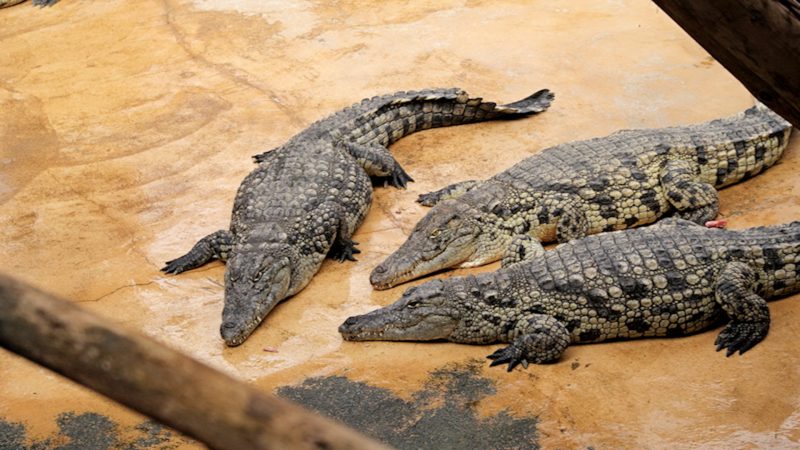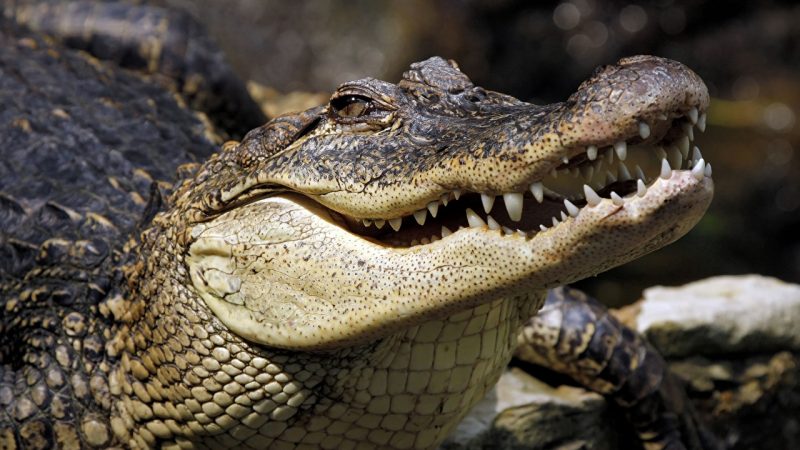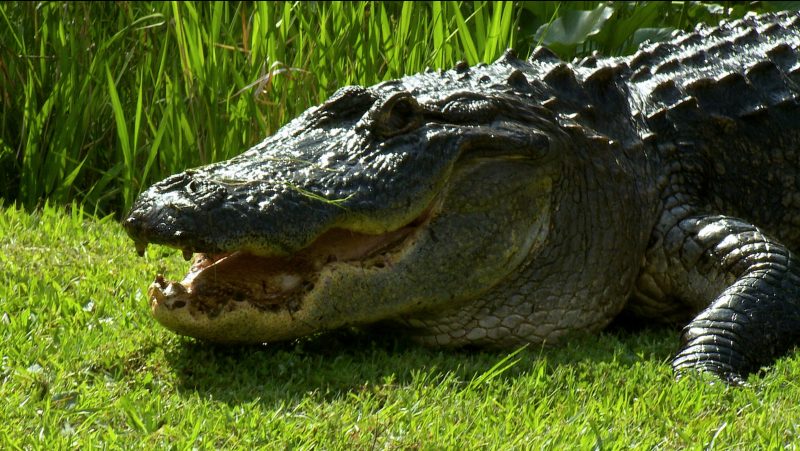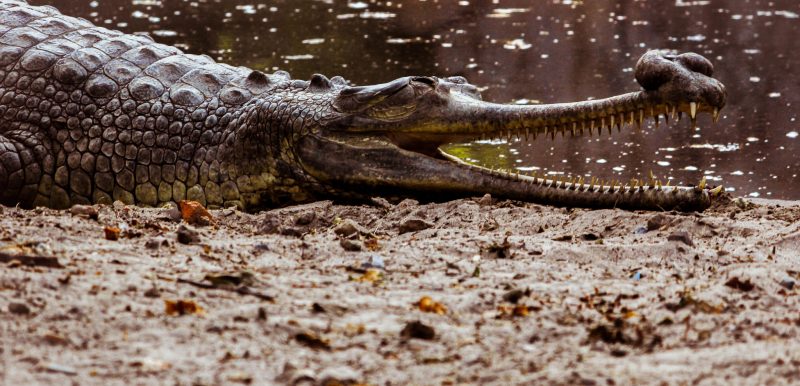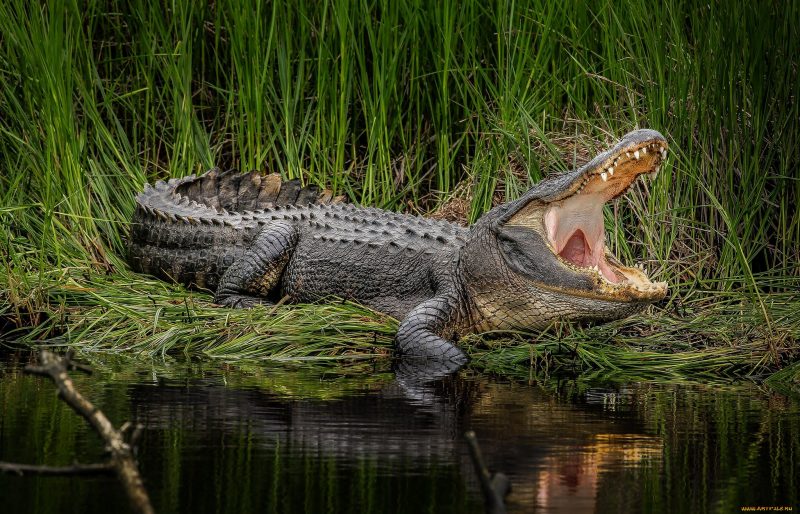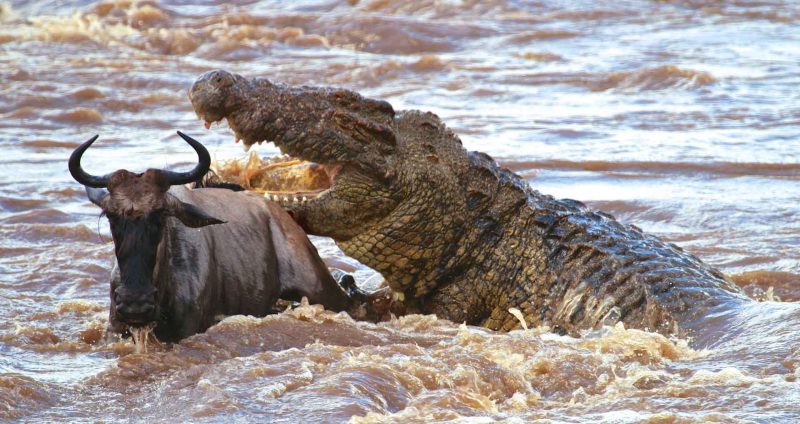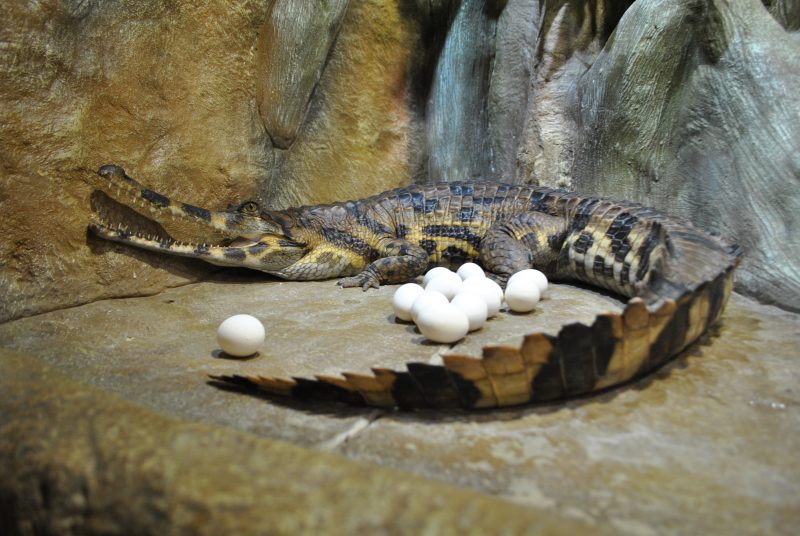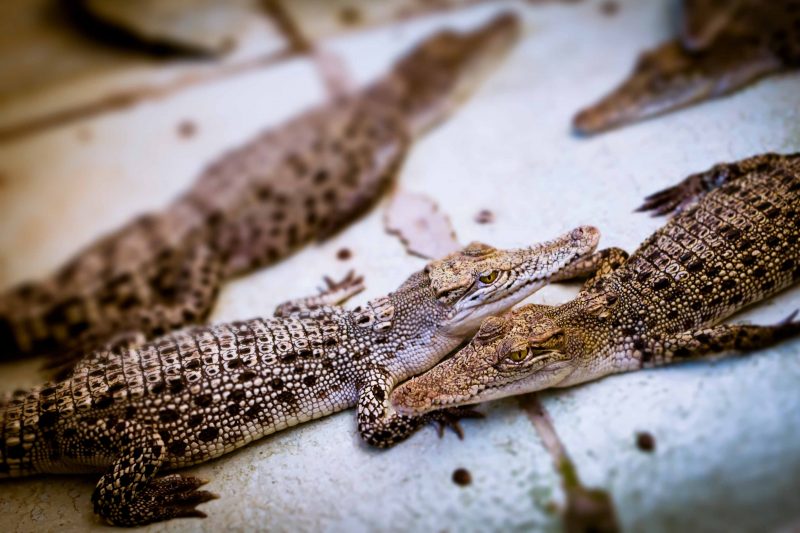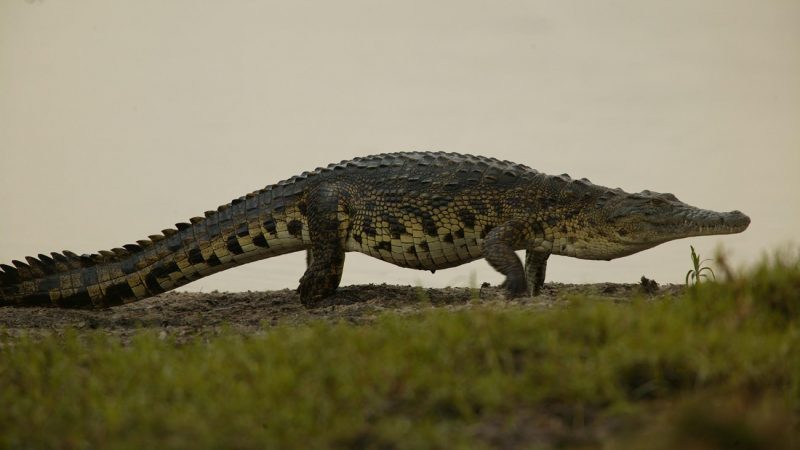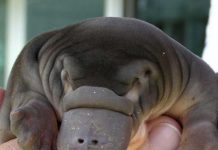Terrible, ferocious and bloodthirsty predators - crocodiles, are terrifying with their size. And yet, this closest dinosaur relative, living on Earth since time immemorial, causes, besides trepidation, a lively and genuine interest. Where do crocodiles live, what varieties of these reptiles exist?
Material Content:
General characteristics of the crocodile squad
The term "crocodile" has ancient Greek roots. In literal translation, an animal can be described as a “pebble worm,” possibly due to the similarity of lizard scales to small pebbles.
It is interesting! Until 2003, the Crocodilia detachment included modern crocodiles, their closest extinct relatives and rather distant brethren - crocodile-like archosaurs. Later, the superorder Crocodylomorpha was formed, which was used exclusively to designate the current crocodiles and their closest relatives.
Crocodile is a wild animal belonging to aquatic vertebrates. Predators are recognized as representatives of the ancient class of archarosaurs. Interestingly, most of these animals in the wild died out, in particular dinosaurs.
Depending on the animal species, the length of the body of the predator can be from 2 to 7 m, and weight - 400-700 kg.
The head of a crocodile is flat with a long muzzle, the body on both sides is flattened, elongated. The limbs are short, on the front legs there are five webbed fingers, on the hind legs there is no pinky finger. Small limbs can create a deceptive impression of the slowness of these giants.Nevertheless, even the smallest crocodiles can travel considerable distances on land at a speed of approximately 15 km / h. In water, this reptile accelerates to 30-35 km / h.
It is interesting! The structure of the skull of large dinosaurs is surprisingly reminiscent of dinosaurs. The ears and nose of this predator are located closer to the top of the head. Thanks to this feature, crocodiles are able to lie under water for a long time, observing what is happening on the surface. At the same time, the insidious predator is able to smell prey by putting out the eyes and nostrils.
The ominous mouth of the crocodile is equipped with cone-shaped teeth. Their length can reach 5 cm. Inside the teeth of the predator are equipped with cavities in which new young chewing units are formed after the old ones wear out. Their number can reach from 72 to 100 pieces.
The body of the reptile is covered with hard skin, which consists of keratinized rectangular shields. The latter are arranged in neat rows. Strong ribs protect the abdominal cavity. Depending on the variety of the animal, the skin of the crocodile are sand, brown, dark brown or almost black.
Crocodile’s heart is four-chambered, and in its blood there are antibiotics that protect animals from various infections. A muscular stomach is provided with gastrolites, special stones that help crush food.
Crocodile continues to increase in size all his life. This contributes to the continuous growth of cartilage. The life expectancy of a reptile in nature is on average 80-100 years.
Variety of reptiles
Crocodiles rightfully take the place of the most highly developed animals among the living reptiles.
This toothy family is represented by the following varieties of crocodiles:
- comb (marine);
- African;
- Swamp (Indian);
- Nile
- Orinoc;
- sharp-headed American;
- Australian;
- Philippine;
- Central American
- New Guinean;
- Siamese.
Alligator family.
Includes the following types of reptiles:
- black cayman;
- mississippian alligator;
- spectacle cayman;
- Paraguayan (Yakar) cayman;
- Chinese alligator
- dwarf, smooth-faced cayman Cuvier;
- wide-ranging cayman;
- Schneider's dwarf, smooth-faced cayman.
The gavial family.
Its representatives have a somewhat specific, as for a crocodile, appearance. It has only two species: the gavial itself and the gavial crocodile (pseudogavial, false gavial).
Natural habitat
Where do crocodiles live? In almost all countries with a tropical climate. Tooth dinosaurs can be found in the Philippines, Africa, Bali and Guatemala, Japan, Northern Australia, in the vastness of both Americas.
Often, crocodiles are home to freshwater bodies in which predators live most of the day.
But in view of the good salt metabolism, some dinosaurs are able to live in the salt water of the sea. An example of such animals are the pointed and combed pitchforks of reptiles living in the coastal part of the sea.
Lifestyle and what to eat
The diet of a crocodile directly depends on its size: the larger it is, the more varied the menu. Basically, a predator eats fish, mollusks, lizards, snakes, amphibians, birds. However, mammals are, of course, the most beloved prey for water giants. Crocodile hunting is considered successful when a predator gets a boar, buffalo, deer or antelope as a treat. The victims of the teeth of predators are lions, leopards, hyenas, as well as kangaroos, hares, raccoons, monkeys. Toothy creatures are able to bite pets, and sometimes even commit an act of cannibalism, eating their own kind. Crocodiles living in the seas feed on sharks, turtles, fish, and dolphins.
The crocodile swallows a small victim whole, engaging in a battle with large prey. As a rule, he guards large animals at a watering hole, suddenly attacking and dragging potential food into the water. Strong and strong crocodiles of the jaw easily crush the bones of animals.The predator effectively applies the method of lethal rotation, tearing the victim apart in a matter of seconds. Crocodiles, on the contrary, try to drag large fish in shallow water: it is easier to deal with water prey there.
Toothy predators eat quite a lot: their lunch sometimes makes up about 20% of the mass of the crocodile itself. Often, the reptile leaves part of it caught in reserve, although it is often not preserved and goes to other predators.
Spending a lot of time in the water, crocodiles go to land in the evening or in the morning, taking sun baths. In the dry period, reptiles are able to hibernate, living in holes dug at the bottom of a drying reservoir.
Animal breeding
In the mating season, males lure potential "brides" with a variety of tricks. This set may include splashing your face in the water, but most often males prefer to make various sounds: growl, hiss, etc. After mating, the females lay their eggs. To do this, use sand on the shallows or the same nest, consisting of dirt and leaves. Clutch can count from 10 to 100 eggs (their number depends on the type and size of the mother). In sunny places, the depth of the pit will reach half a meter. The laid eggs are sprinkled with earth or sand. Often, females of a crocodile try to be near the masonry, protecting future offspring from potential enemies.
All eggs begin to hatch at once. Being in the egg, newborn crocodiles make sounds, and a toothy mother begins to dig up sand, helping children get out. After the female carries the cubs to the water in her mouth. But this behavior is not characteristic of all crocodiles. Pseudogavial, for example, does not care about offspring at all.
When carrying babies, the female is as neat as possible. Interestingly, during the procession, the crocodile can accidentally pick up and transfer into the water, except for her children, and the cubs of the turtle. For safety reasons, the latter often lay eggs close to crocodiles.
What is the difference between a crocodile and an alligator, caiman and gavial
Although crocodiles, alligators, caimans and gavials belong to the same order, such animals are distinguished by dimensions and appearance.
The main difference between an alligator and a crocodile is, of course, the features of the muzzle. In a crocodile, it is pointed and resembles the Latin letter “V” in shape, and the alligator’s face is more obtuse and looks like the letter “U”.
Crocodiles are endowed with salt and lacrimal glands, helping to remove salts from the body. It is because of this that they are able to inhabit the sea. Without such glands, the alligator lives only in freshwater bodies of water.
The main difference between crocodiles and gavials is the presence of the same glands in the former. Consequently, the gawials are also not able to dwell in salt water. Their jaws are narrower, due to the type of food: these predators hunt exclusively for fish. Gavial teeth are shorter and thinner than crocodiles, but outnumber them (66 or 68 for crocodiles and about 100 for gavials). The average size of gavials and crocodiles is generally identical, but large individuals of the crocodiles can exceed the maximum gavial body lengths.
Crocodiles and caimans belong to the same order, but still representatives of different families. The main differences between these two animals are identical to those of crocodiles and alligators.
Where do the largest representatives of the species live?
In which countries do crocodiles live, distinguished by their impressive size?
These lizards are rightfully considered the largest predators of various bodies of water on planet Earth.
Nevertheless, frankly giant individuals are often found among them, for example:
- African narrow-crocodile. Its length is 3-4 m. Reptiles live in the vastness of West Africa.
- Cuban crocodile. The maximum recorded size of this crocodile is 4–9 m. It differs from its counterparts by its brightness of color and long limbs. He lives in the swampy waters of Cuba, which provoked the appearance of such a name.
- Central American crocodile. It can reach a length of almost 4.5 m and weigh about 500 kg. This reptile is considered not only large, but also the fastest water predator. This kind of crocodile is common in the Gulf of Mexico, as well as in US waters.
- Nile crocodile. The largest individuals of the family can reach a length of 5.5 m and weigh half a ton. The record holder among crocodiles, whose habitat covers almost the whole of Africa, is an individual caught at the beginning of the 20th century. Its weight exceeded a ton, and the body length exceeded 6 m.
- The sharp-headed crocodile. The average body length of these animals ranges from 4-5.5 m and weighs 500 kg.
- Saltwater crocodile. Recognized as one of the largest and most massive representatives of the family. Particularly large reptiles reach 7 m in length and weigh almost 2 tons. It was such a specimen that was caught in the Philippine Islands area. Today, this combed crocodile lives in a zoo and captures the many goggles of tourists.
Did you know? It is difficult to imagine how the life of modern mammals and humans would have developed if the largest extinct crocodiles had survived.
The real champions in the ratio of dimensions were considered sarcosuchus and deinosuchus. Moreover, the first of them could reach a length of 15 m and weigh about 14 tons. The skull of the gigantic monster had truly enormous dimensions - up to 1.5 m in length. The body of the animal was covered with a hard shell that protected it from a dinosaur bite. Powerful jaws made it easy to catch herbivorous dinosaurs. These crocodiles lived on the territory of the modern African continent. But of course, Deinosuchus, the largest ever crocodile ever lived, is recognized as the true record holder. He lived about 80 million years ago. The skeleton of the giant found exceeded 16 m, and the weight was estimated at about 15 tons.
Attentive and skillful hunters, crocodiles have been terrifying the inhabitants of water and land for many centuries in a row. These reptiles can belong to different species and have a number of differences, but in general, representatives of the crocodile family are similar in appearance and in terms of habits.


